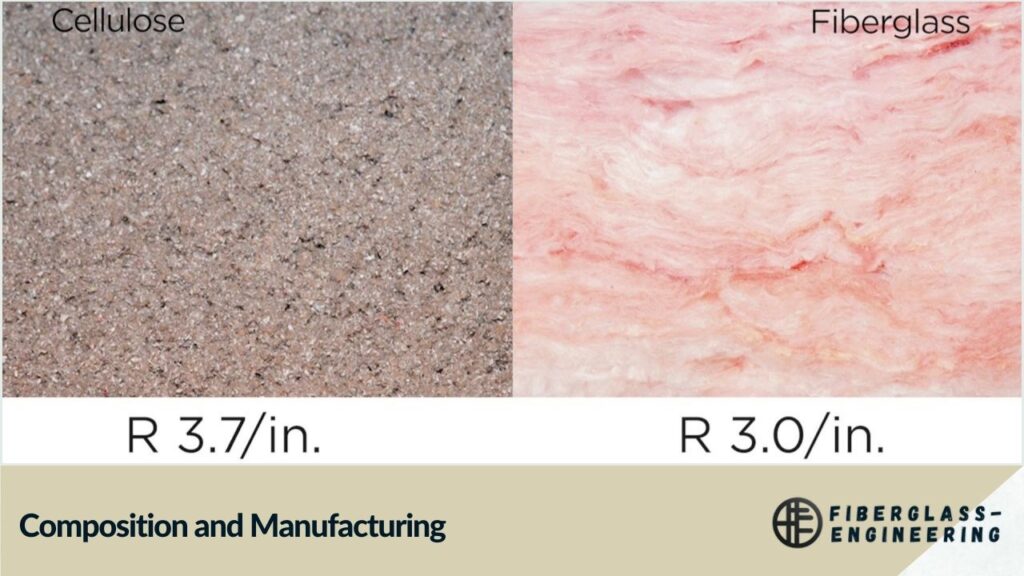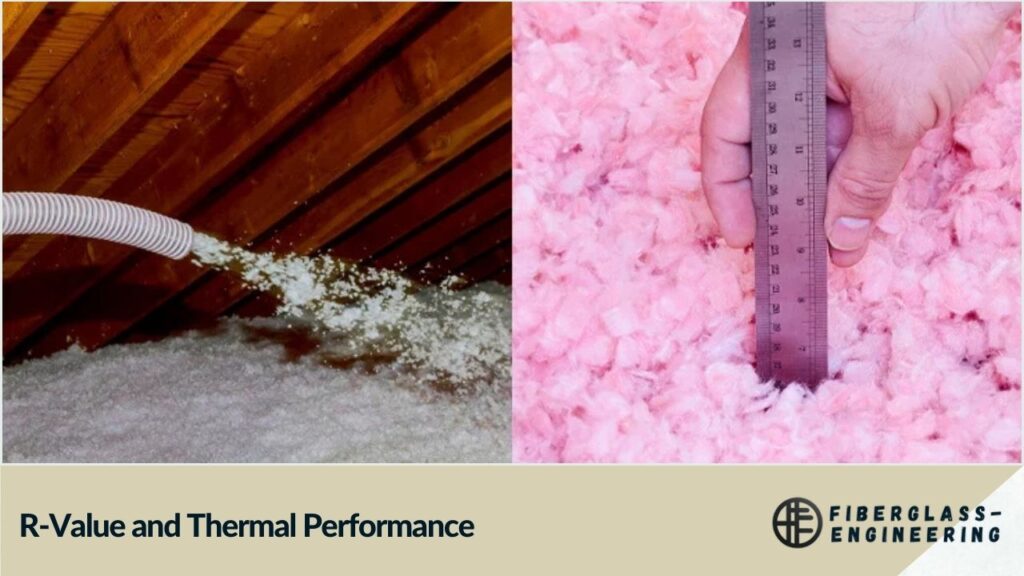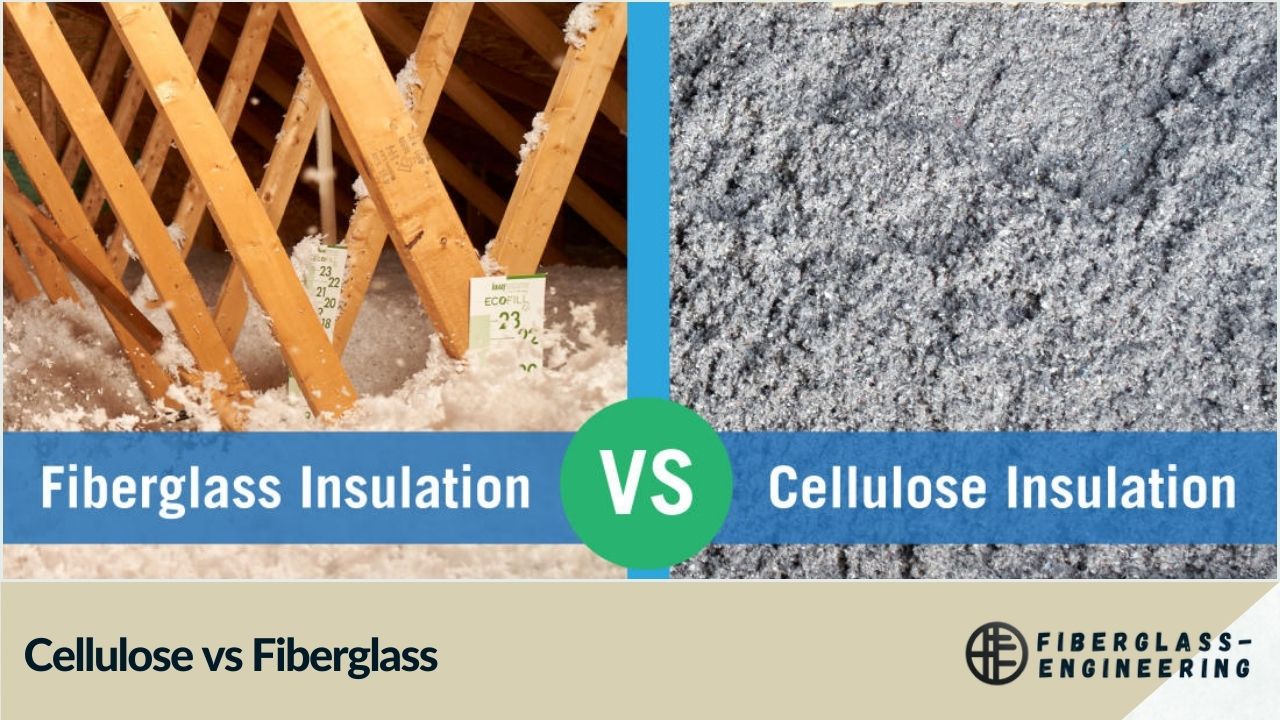When it comes to insulating your attic, two popular options stand out: cellulose and fiberglass. Both materials have their merits, but understanding the key differences between them can help you make an informed decision for your home. Let's dive into a comprehensive comparison of cellulose and fiberglass blown-in attic insulation.
Composition and Manufacturing

Cellulose insulation is primarily made from recycled paper products, mainly newspaper, that have been treated with fire-retardant chemicals. This composition makes cellulose one of the most environmentally friendly insulation options available. The manufacturing process involves grinding the paper into small pieces and treating it with borate compounds to resist fire, mold, and pests.
Fiberglass insulation, on the other hand, is made from tiny glass fibers. It's produced by melting sand and other recycled glass materials, then spinning them into fibers. While fiberglass does contain some recycled content, it's generally not as high as cellulose.
R-Value and Thermal Performance

R-value is a crucial factor in determining insulation effectiveness. It measures the material's resistance to heat flow, with higher values indicating better insulation. Cellulose typically has a slightly higher R-value per inch compared to fiberglass. Cellulose offers an R-value of about 3.2 to 3.8 per inch, while fiberglass provides around 2.2 to 2.7 per inch.
However, it's important to note that the actual thermal performance can vary depending on installation quality and other factors. Cellulose tends to perform better in extreme temperatures, maintaining its R-value more consistently in very cold or hot conditions.
Air Sealing Properties
One of the most significant advantages of cellulose insulation is its superior air-sealing capabilities. Cellulose is denser than fiberglass and can effectively fill small gaps and crevices, creating a more airtight barrier. This property helps reduce air infiltration, which can significantly impact your home's energy efficiency.
Fiberglass, being less dense, doesn't provide the same level of air sealing. While it can still be effective when properly installed, it may require additional air sealing measures to achieve the same level of performance as cellulose.
Moisture Handling
Both cellulose and fiberglass can be affected by moisture, but they handle it differently. Cellulose can absorb and hold moisture, which can be both an advantage and a disadvantage. On one hand, it can help distribute moisture and allow for eventual drying. On the other hand, if exposed to excessive moisture for prolonged periods, it can lose its insulating properties and potentially lead to mold growth.
Fiberglass doesn't absorb water, which can be beneficial in preventing mold growth. However, if fiberglass gets wet, water can easily pass through it, potentially causing damage to other parts of your home's structure.
Installation Process
Both cellulose and fiberglass can be blown in, making them suitable for retrofitting existing homes or insulating new construction. However, there are some differences in the installation process.
Cellulose tends to be denser and settles less over time, which means it's less likely to leave gaps or voids after installation. It also adheres better to surfaces, making it ideal for use in walls and sloped areas.
Fiberglass, being lighter, can be more challenging to install evenly and may require more material to achieve the same R-value as cellulose. However, it's less dusty during installation, which some installers prefer.
Environmental Impact
Cellulose insulation is often considered the more environmentally friendly option. It's made from up to 85% recycled material and requires less energy to produce than fiberglass. Additionally, cellulose has a lower embodied energy, meaning less energy is used in its production and transportation.
While fiberglass does contain some recycled content (typically around 20-30%), its production process is more energy-intensive. However, both materials can contribute to energy savings in your home, which has a positive environmental impact over time.
Fire Resistance
Both cellulose and fiberglass insulation are treated to be fire-resistant, but they behave differently in fire situations. Cellulose is treated with borate compounds that make it highly resistant to flame spread. When exposed to fire, cellulose tends to char rather than melt or burn, potentially slowing the spread of fire.
Fiberglass is naturally non-combustible due to its glass composition. However, the paper backing on some fiberglass products can burn. In high heat situations, fiberglass can melt, potentially allowing fire to spread more quickly than with cellulose.
Cost Considerations
The cost of insulation can vary depending on your location and the specific products used. Generally, cellulose and fiberglass are comparable in price, with cellulose sometimes being slightly less expensive. However, the overall cost will depend on factors such as the amount of insulation needed, labor costs, and any additional air sealing measures required.
It's worth noting that while the upfront costs may be similar, the long-term energy savings can differ. Due to its better air-sealing properties and consistent R-value, cellulose may offer better energy savings over time, potentially offsetting any initial cost differences.
Health and Safety Considerations
Both cellulose and fiberglass insulation are considered safe when properly installed, but there are some differences to consider. Cellulose dust can be irritating during installation, but once settled, it poses minimal health risks. The borate compounds used to treat cellulose are considered safe for humans.
Fiberglass can cause skin, eye, and respiratory irritation during installation, and some people are more sensitive to these effects. Proper protective equipment is essential when working with fiberglass. Once installed and sealed behind walls or in attics, fiberglass poses minimal health risks to occupants.
Long-Term Performance
When it comes to long-term performance, both cellulose and fiberglass can be effective if properly installed and maintained. Cellulose tends to settle less over time, maintaining its R-value and coverage more consistently. It also adapts well to seasonal expansion and contraction of framing members.
Fiberglass can lose some of its effectiveness if compressed or exposed to air movement, which can reduce its R-value over time. However, with proper installation and maintenance, fiberglass can also provide long-lasting insulation performance.
In conclusion, both cellulose and fiberglass blown-in insulation have their strengths and can be effective choices for attic insulation. Cellulose often edges out fiberglass in terms of environmental friendliness, air-sealing capabilities, and consistent performance in extreme temperatures. However, fiberglass remains a popular choice due to its non-moisture absorbing properties and ease of installation.
The best choice for your home will depend on various factors, including your climate, home structure, budget, and personal preferences. Consulting with a professional insulation contractor can help you make the best decision for your specific situation.
FAQs
- Which is better for attic insulation, cellulose or fiberglass?
Both can be effective, but cellulose often performs better in air sealing and maintaining R-value in extreme temperatures. - Is cellulose insulation more eco-friendly than fiberglass?
Yes, cellulose is typically more eco-friendly as it's made from up to 85% recycled materials and requires less energy to produce. - Does cellulose insulation pose any health risks?
Properly installed cellulose insulation poses minimal health risks. The borate compounds used are considered safe for humans. - How does the cost of cellulose compare to fiberglass insulation?
Costs are generally comparable, with cellulose sometimes being slightly less expensive. Long-term energy savings may differ. - Can I install blown-in insulation myself?
While possible, professional installation is recommended for optimal performance and to avoid potential health and safety risks.

